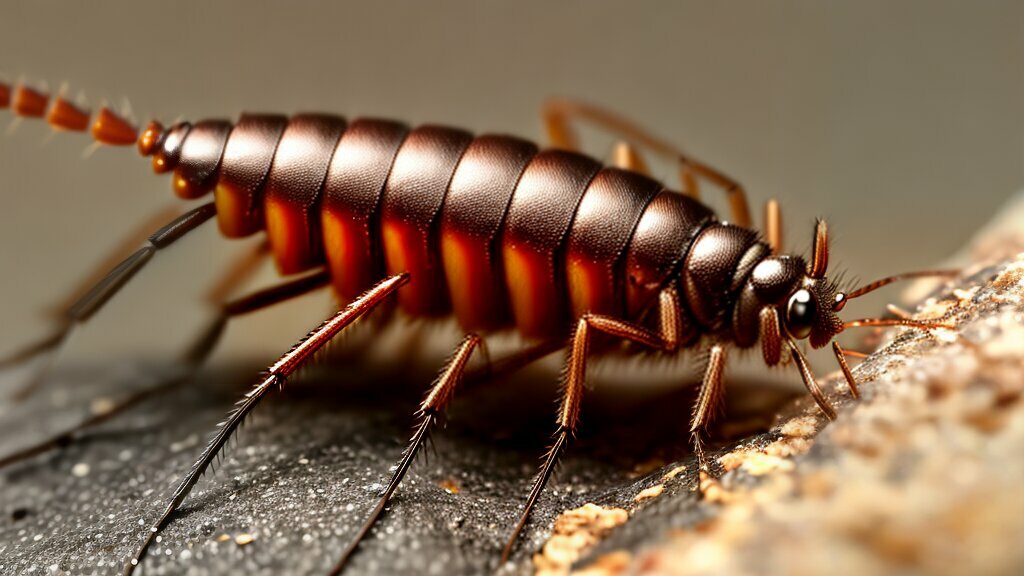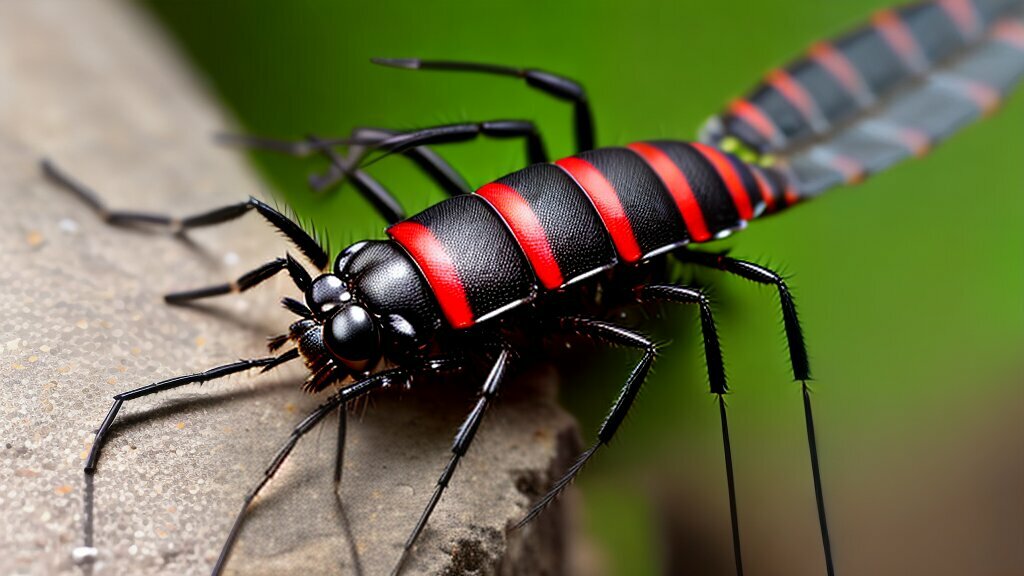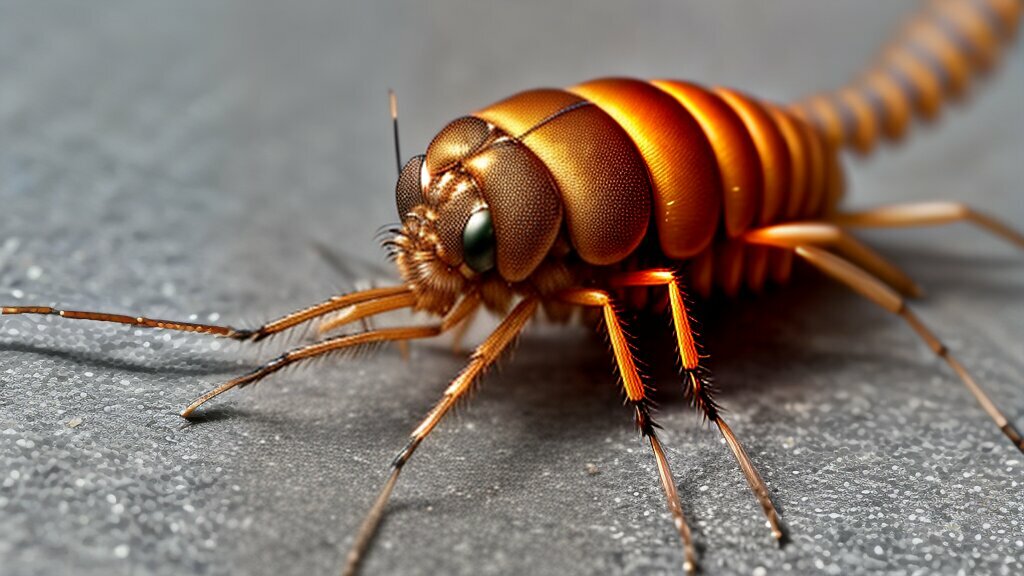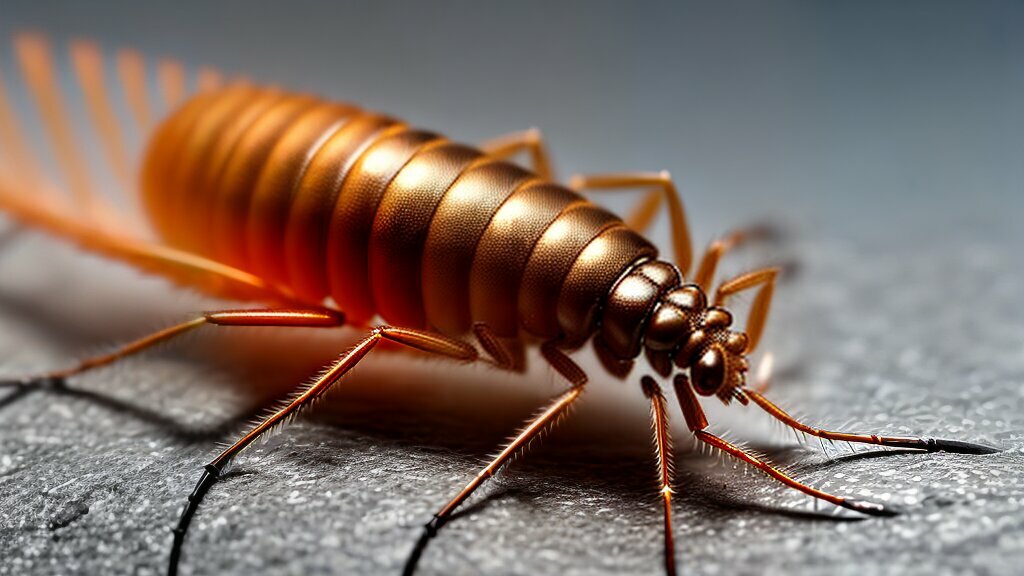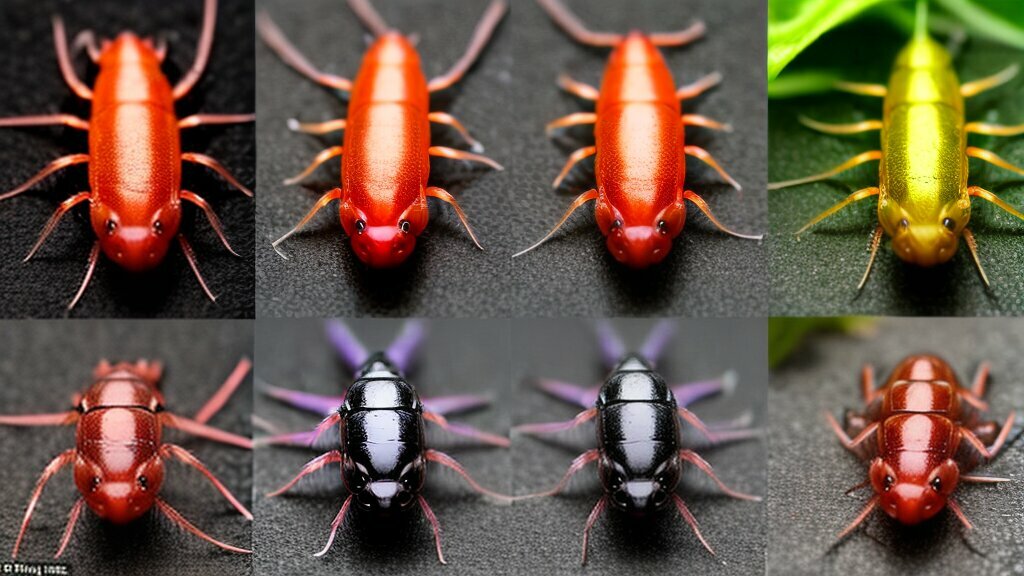Have you ever seen a house centipede scurry across your floor with lightning-speed, their numerous legs propelling them effortlessly? It’s an impressive sight, but what happens if they lose one of those legs? Can they regrow it? This is an intriguing question that has fascinated scientists and nature enthusiasts for decades. In this section, we will explore the ability of house centipedes to regrow their legs and uncover the facts behind this remarkable feat.
Key Takeaways:
- House centipedes are able to regrow their legs.
- This ability involves a complex process of cell division and differentiation.
The Regenerative Abilities of House Centipedes
House centipedes possess a remarkable regenerative ability that allows them to regrow their legs. This ability is crucial for their survival, as they use their legs for hunting prey and escaping predators. The regrowth of legs in house centipedes is a fascinating process that involves a complex interplay of cellular and molecular mechanisms.
Unlike humans, who can only regenerate certain tissues such as skin and liver, house centipedes can regrow legs that have been completely severed. The process of leg regeneration in house centipedes begins with the formation of a specialized structure called a blastema at the site of the injury. The blastema is composed of undifferentiated cells that have the potential to develop into different types of cells.
| Stage of Leg Regeneration | Description |
|---|---|
| Blastema Formation | Undifferentiated cells form a blastema at the site of the injury. |
| Cell Differentiation | The blastema cells differentiate into different cell types, such as muscle, nerve and connective tissue cells. |
| Appendage Formation | The differentiated cells organize themselves into the complex structure of a new leg. |
Once the blastema is formed, the undifferentiated cells start to differentiate into different cell types such as muscle, nerve and connective tissue cells. As the cells differentiate, they organize themselves into the complex structure of a new leg. The regenerated leg is not an exact replica of the original leg, but it is functional and allows the house centipede to resume its normal activities.
The regrowth of legs in house centipedes is a fascinating example of the regenerative abilities that exist in the animal kingdom. By understanding the mechanisms involved in leg regeneration, scientists hope to gain insights into the potential for regenerative medicine in humans.
Understanding the Leg Regrowth Process
House centipedes have the remarkable ability to regrow their legs. The process of leg regeneration is a complex one and involves multiple stages.
Firstly, a clot forms at the site of the injury. This clot acts as a barrier to prevent further bleeding and serves as a foundation for the new leg to form. Within 24 hours of the injury, the cells at the injury site begin to divide and form a structure called the blastema.
The blastema is a mass of cells that contains all the necessary components for leg regeneration, including stem cells. These stem cells are capable of differentiating into all the cell types needed to form a new leg.
Over the course of several weeks, the cells in the blastema divide and differentiate to form the various tissues and structures of the new leg. Finally, the new leg begins to extend and grow, and within a few months, it reaches its full length.
While the process of leg regeneration in house centipedes is an incredible feat of biology, it is not foolproof. Several factors can influence the success of leg regeneration, including the extent of the injury, the age of the centipede, and its overall health and nutritional status.
Despite these limitations, the ability of house centipedes to regrow their legs is an excellent example of the remarkable regenerative abilities found in several species of animals.
Factors Affecting Leg Regeneration in House Centipedes
While house centipedes have an impressive ability to regrow their legs, several factors can influence the success of this process. One critical factor is the age of the centipede. Younger centipedes tend to have a more robust regenerative ability than older ones.
The size and location of the injury can also affect the regrowth of the leg. Injuries closer to the centipede’s body tend to heal more quickly than those further away. Additionally, smaller injuries are more likely to regenerate successfully than larger ones.
The presence of infection or disease can hinder the leg regeneration process in house centipedes. In such cases, the centipede’s immune system may focus on fighting the infection or disease, rather than on regenerating the lost leg.
Finally, the availability of nutrients and resources is also a critical factor that impacts leg regeneration in house centipedes. Insufficient nutrients or resources may impede the centipede’s ability to regrow its leg.
Understanding these factors is important for anyone seeking to keep house centipedes as pets or wishing to promote their leg regeneration in the wild. By providing optimal conditions and resources, it is possible to enhance the regenerative ability of these fascinating creatures.
Comparisons to Leg Regeneration in Other Creatures
House centipedes are not the only creatures that possess the ability to regenerate their legs. Many invertebrates, such as crustaceans, spiders, and insects, are also capable of this feat. Some vertebrates, such as certain salamanders and lizards, can also regenerate their limbs.
However, the mechanisms and limitations of leg regeneration vary between species. While house centipedes can regrow a leg fully, some other creatures can only regenerate a portion of the limb, such as the tail in certain lizards. In addition, the time it takes for regeneration to occur can vary greatly between species.
Despite these differences, the ability to regenerate limbs is a fascinating example of the resilience of the natural world. It allows animals to adapt to changing environmental conditions and recover from injuries that may otherwise be fatal.
Conclusion
House centipedes have proven to possess the remarkable ability to regrow their legs. Through our exploration of the leg regrowth process and the factors influencing it, we gain a deeper understanding of their resilience and adaptability.
It is clear that house centipedes have evolved to possess a unique mechanism of leg regeneration that sets them apart from other creatures. While there may be limited research on this topic, it is evident that they possess an adaptive mechanism that aids in their survival and recovery after injury.
We hope that our exploration of this fascinating ability has provided you with a broader understanding of the world of house centipedes and the wonders of nature. With the advancements in scientific research, perhaps there is much more to be discovered about the leg regeneration abilities of these creatures and other fascinating creatures in the animal kingdom.
FAQ
Q: Can house centipedes regrow legs?
A: Yes, house centipedes have the remarkable ability to regrow their legs.
Q: How do house centipedes regrow their legs?
A: The leg regrowth process in house centipedes involves several stages and mechanisms that allow for the regeneration of their legs.
Q: What factors contribute to successful leg regeneration in house centipedes?
A: Various factors, such as proper nutrition, a suitable environment, and the absence of certain inhibitors, can promote the successful regrowth of legs in house centipedes.
Q: Are there any conditions that can hinder the leg regeneration ability of house centipedes?
A: Yes, factors like stress, poor nutrition, and the presence of inhibitors can hinder the regrowth of legs in house centipedes.
Q: How does the leg regeneration capability of house centipedes compare to other creatures?
A: The leg regeneration abilities of house centipedes are comparable to those of other creatures, with some similarities and differences. The evolutionary significance of this ability is also an interesting topic of discussion.

